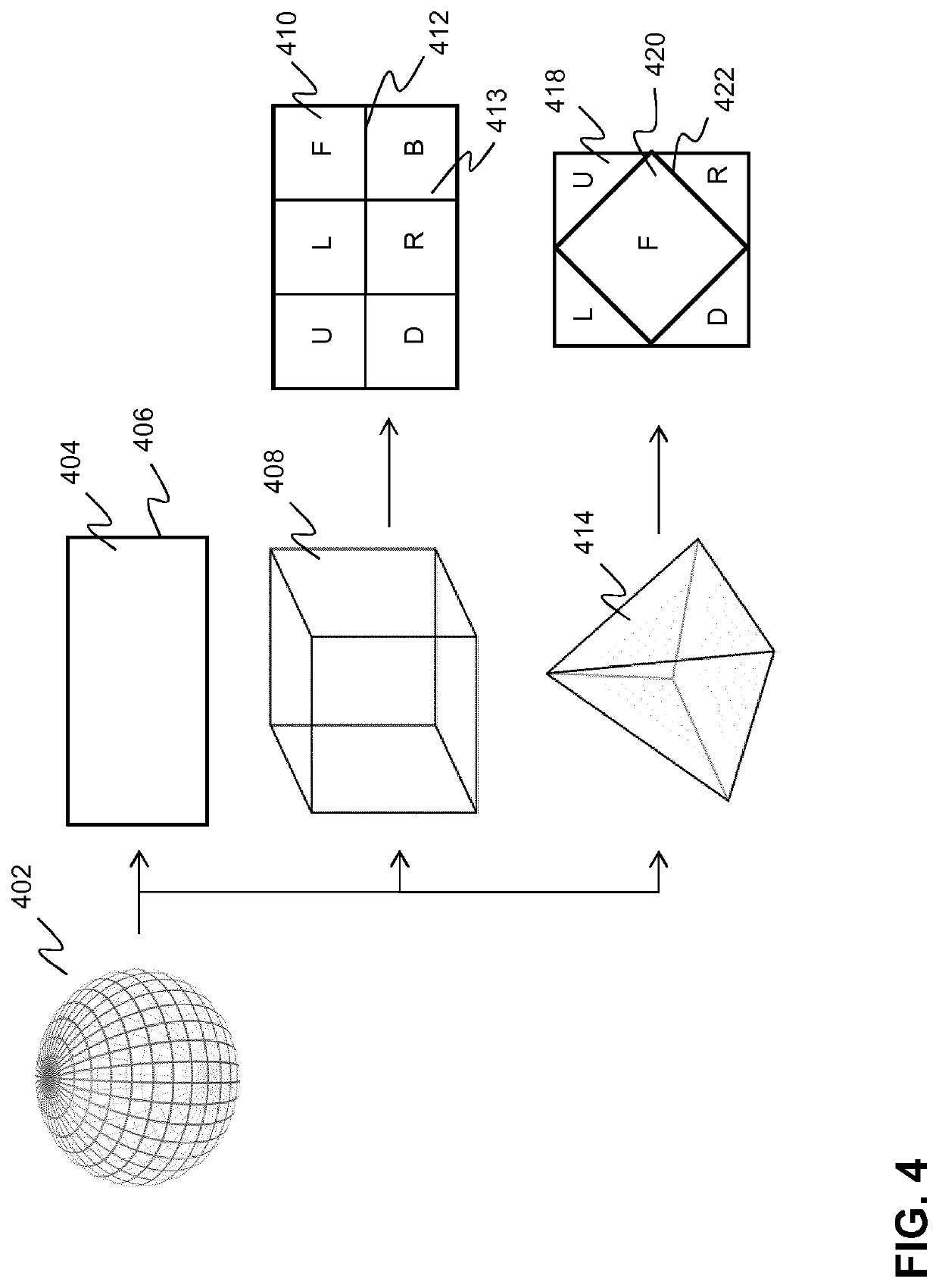Coding Spherical Video Data
a video data and spherical technology, applied in the field of coding spherical video data, can solve the problems of reducing coding performance, reducing and both assumptions being incorrect when dealing with spherical video data, so as to reduce the cost of encoding and distortion introduced by encoding, the effect of minimizing the detrimental effect of pixel regions
- Summary
- Abstract
- Description
- Claims
- Application Information
AI Technical Summary
Benefits of technology
Problems solved by technology
Method used
Image
Examples
Embodiment Construction
[0075]FIG. 1 depicts a high-level flow diagram of a method for processing spherical content. The process may include the capturing of multiple images (step 102) using a panoramic or 360-degree image capturing system, which typically comprises multiple, i.e. two or more image sensors. Images of overlapping field of views, generated by different image sensors, may be stitched together (step 104) into one panorama or high-resolution image.
[0076]The stitching of images into one image is a well-known image processing technique, that typically includes alignment and panorama composition. In the alignment process, feature descriptors may be extracted from images in order to find corresponding image features. The alignment is used to estimate the image camera pose or orientation of each image. The panorama composition procedure subsequently uses this information for combining all images into one panorama image. Image blending may be used to seamlessly stitch the thus combined images togethe...
PUM
 Login to View More
Login to View More Abstract
Description
Claims
Application Information
 Login to View More
Login to View More - R&D
- Intellectual Property
- Life Sciences
- Materials
- Tech Scout
- Unparalleled Data Quality
- Higher Quality Content
- 60% Fewer Hallucinations
Browse by: Latest US Patents, China's latest patents, Technical Efficacy Thesaurus, Application Domain, Technology Topic, Popular Technical Reports.
© 2025 PatSnap. All rights reserved.Legal|Privacy policy|Modern Slavery Act Transparency Statement|Sitemap|About US| Contact US: help@patsnap.com



